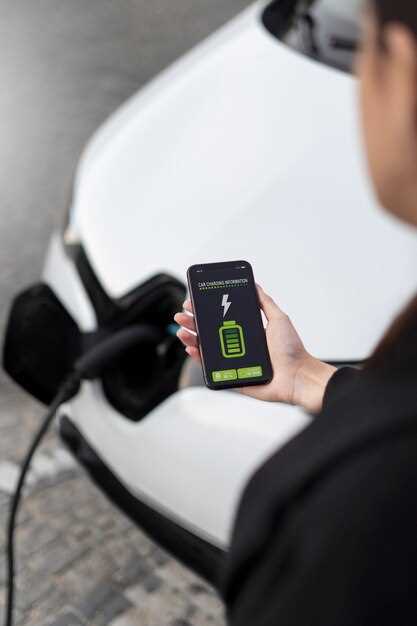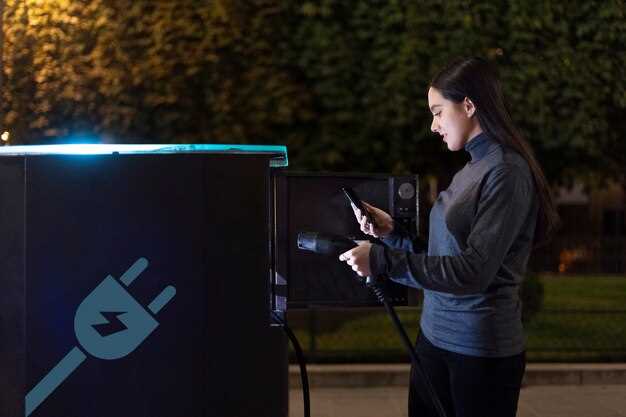
The automotive industry is experiencing a significant transformation as we move into 2024, with wireless charging and enhanced connectivity features becoming increasingly pivotal in vehicle design. Manufacturers are now focused on integrating advanced technologies that cater to the growing demands for convenience and efficiency among consumers. As electric vehicle (EV) adoption continues to rise, so does the necessity for innovative charging solutions that eliminate the need for cumbersome cables and connectors.
Wireless charging has emerged as a game-changer in this sector, enabling drivers to recharge their vehicles effortlessly while parked. This technology not only promotes a seamless user experience but also encourages the expansion of charging infrastructure, making it more accessible to a wider audience. As we delve deeper into 2024, we can expect to see more automakers incorporating inductive charging systems that adhere to international standards, allowing for compatibility across different brands and models.
In tandem with wireless charging advancements, connectivity trends are set to redefine how drivers interact with their vehicles. The integration of 5G technology, over-the-air updates, and smart vehicle-to-everything (V2X) communication will enhance the overall driving experience. Furthermore, features such as in-car Wi-Fi and seamless smartphone integration promise to keep drivers and passengers connected on the go. As these innovations take center stage in 2024 models, they will not only enhance user satisfaction but also contribute to a safer and more connected driving environment.
Evaluating the Impact of Increased Qi Standard Adoption on Device Compatibility
The adoption of the Qi wireless charging standard has steadily increased over the past few years, setting a foundation for enhanced device compatibility across various manufacturers and device types. As more devices integrate this technology, numerous implications arise regarding usability, convenience, and market dynamics.
One of the primary benefits of widespread Qi standard adoption is improved compatibility among devices. This trend can be analyzed through the following key points:
- Universal Charging Solutions: Users can charge multiple devices, including smartphones, tablets, and wearables, with the same Qi-enabled charger. This universality simplifies users’ experiences, reducing the need for multiple charging accessories.
- Increased Product Offerings: As more manufacturers adopt the Qi standard, the variety of compatible products will expand. This encourages consumers to explore different brands without worrying about charging compatibility.
- Reduction in Electronic Waste: The compatibility across devices minimizes the necessity for unique chargers, thereby potentially lowering electronic waste. Fewer specialized products result in a smaller carbon footprint, aligning with global sustainability goals.
- Enhanced Consumer Confidence: With the assurance of compatibility, consumers are more likely to invest in Qi-enabled devices. This can lead to increased sales for manufacturers and a booming market for accessories.
- Innovation and Improvements: The expansion of the Qi standard encourages competition among manufacturers, driving technological advancements. New features and improvements in charging speeds and efficiency are likely as brands seek to differentiate themselves.
However, the rapid proliferation of the Qi standard isn’t devoid of challenges. It produces effects that might complicate the landscape:
- Fragmentation of Standards: While Qi is gaining traction, some manufacturers may deviate from this standard, focusing on proprietary solutions, potentially creating compatibility issues in the future.
- Market Saturation: An influx of Qi-compatible devices could lead to market saturation, where consumers may become overwhelmed by choices, possibly hindering purchasing decisions.
- Quality Variances: With more players entering the market, discrepancies in quality among Qi-certified products could emerge, leading to consumer dissatisfaction.
Overall, the increased adoption of the Qi standard is transforming the wireless charging landscape. The impacts on device compatibility pose significant benefits, fostering an ecosystem characterized by convenience, sustainability, and innovation, while also presenting challenges that the industry must navigate.
Exploring the Security Features of Wireless Charging Technologies in 2024 Devices

The proliferation of wireless charging technologies in 2024 devices has necessitated a comprehensive approach to security features, addressing the growing concerns over data integrity and device protection. Modern wireless charging systems employ advanced encryption protocols that ensure secure communication between the charger and the device. This prevents unauthorized access and potential data breaches during the charging process.
Another key aspect of security in wireless charging is the integration of authentication mechanisms. In 2024, many manufacturers have adopted mutual authentication protocols that require both the charger and the device to verify each other’s identity before initiating a charging session. This substantially reduces the risk of using counterfeit chargers that could harm devices or steal sensitive information.
Additionally, wireless charging technologies are increasingly incorporating advanced magnetic resonance and inductive charging methods. These systems not only boost efficiency but also incorporate safety features such as foreign object detection (FOD) systems. FOD prevents charging when objects like coins or metal pieces are detected on the charging pad, mitigating risks of overheating and potential fire hazards.
Enhanced software security in 2024 devices complements hardware features. Regular firmware updates play a crucial role in fortifying defenses against emerging threats in the wireless charging ecosystem. Manufacturers are now prioritizing over-the-air (OTA) updates that allow quick patching of vulnerabilities, ensuring ongoing protection for end-users.
Privacy considerations have also been paramount in the design of wireless charging systems. By implementing secure data transmission methods, such as using tokenization for sensitive user information, manufacturers can assure users that their personal data remains confidential during the charging process. This is vital in a world where devices are constantly collecting and sharing data.
Finally, as consumers become more aware of security issues, the demand for transparent security protocols rises. Brands in 2024 are increasingly providing clear information about their security practices and the technologies used in their wireless charging systems, fostering trust and reliability among users.
Analyzing the Environmental Benefits of Wireless Charging Solutions in Modern Devices

Wireless charging technology has gained significant traction in recent years, primarily due to its convenience and efficiency. However, its environmental benefits also deserve thorough examination. One of the most notable advantages is the reduction of electronic waste. Traditional charging methods often require multiple cables and adapters for different devices, which inevitably become obsolete or damaged over time. Wireless charging stations, on the other hand, are designed for universal compatibility, allowing multiple devices to charge on a single pad, thus minimizing waste.
Moreover, wireless charging can contribute to energy efficiency. Many modern wireless chargers are engineered to reduce energy loss during the charging process. With the implementation of resonant inductive charging, devices only draw power when they are properly aligned, minimizing idle energy consumption. This technological advancement not only lowers electricity bills for consumers but also contributes to lower overall energy demand, reducing the carbon footprint associated with electricity production.
Additionally, the integration of wireless charging into urban infrastructure, such as public transport systems and smart city initiatives, presents an opportunity to harness renewable energy sources. Some wireless charging stations are equipped with solar panels, using clean energy to power devices and decrease reliance on fossil fuels. By promoting the use of sustainable energy for charging purposes, cities can create greener environments and encourage eco-friendly practices among residents.
The convenience factor of wireless charging also plays a pivotal role in promoting more sustainable behavior. As people increasingly adopt these technologies, they are less likely to resort to disposable batteries or single-use charging solutions that contribute to environmental degradation. By fostering a culture of durable and reusable technology, wireless charging can help drive the shift towards more sustainable consumption habits.
In summary, wireless charging solutions not only offer practical benefits but also foster environmental sustainability. By reducing electronic waste, enhancing energy efficiency, integrating renewable sources, and promoting sustainable behavior, these technologies present a promising pathway towards a greener future in the realm of modern devices.

